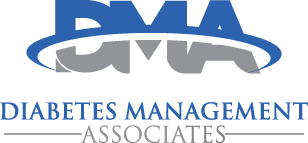According to research published by the U.S. Centers for Disease Control and Prevention Morbidity and Mortality Weekly Report, more than 86% of us are using too much salt. The Dietary Guidelines for Americans recommends less than 2300 milligrams (mg) per day or about 1 teaspoon of salt or sodium. The American Heart Association believes that number should be no more than 1500 mg. While sodium is an essential nutrient to our body, it is needed in relatively small amounts to maintain a balance of body fluids and keep muscles and nerves running smoothly.
Surprisingly, some foods that don’t taste salty can still be high in sodium, which is why using taste alone is not an accurate way to judge a food’s sodium content. We all know that foods like pickles and soy sauce taste salty but did you know that cereals, pastries and bread contain salt?
Besides the salt shaker, sodium chloride is found in many foods including processed meats, canned products and packaged foods. Read the Nutrition Facts label found on packaged foods. It will list the amount of sodium in milligrams or mg. It is important to note that the amount is PER serving. There may be several servings in your container so be cautious.
Here are some sodium-related terms you may see on food packages:
- Salt/sodium free- less than 5 milligrams of sodium per serving
- Very low sodium- 35 milligrams or less per serving
- Low sodium- 140 milligrams or less per serving
- Reduced sodium- at least 25 percent less sodium per serving than the usual sodium level
- Light in sodium or lightly salted- at least 50 percent less sodium than the regular product
No-salt-added or unsalted means none is added during processing but these products may not be sodium/salt free so read the label carefully.
Sodium can raise blood pressure because it attracts water. The body is in a constant, delicate balance. The more sodium that you eat or drink, the more water your body retains. This can cause an increase in blood volume and subsequently high blood pressure or hypertension. In turn, the heart must work harder to pump the extra fluid through the body which can lead to heart failure, kidney failure, stroke as well as damage to vessels in the eyes, legs and other areas.
Tips for reducing sodium consumption:
- Rinse canned foods that contain sodium such as beans, tuna and vegetables to remove some salt
- Choose nuts, seeds and snack that are unsalted
- Condiments such as ketchup and salad dressing can contain salt. Choose light or reduced salt.
- Prepare more of your foods rather than packaged
- Throw away the salt shaker. Try various herbs and spices instead of salt.
Live Long, Live Healthy!
Dr. Julie Wood is a Nurse Practitioner and has been serving the Middle Tennessee area for more than 30 years, specializing in adults with obesity, prediabetes and diabetes. Office is located at 401 First Avenue, Mt. Pleasant, TN and statewide with telehealth. Dr. Wood can be reached at 931-325-5560, www.diabetesmgtassociates.com, [email protected].
Articles are meant to be informative and should never replace the advice of your health care provider.
5/4/22
